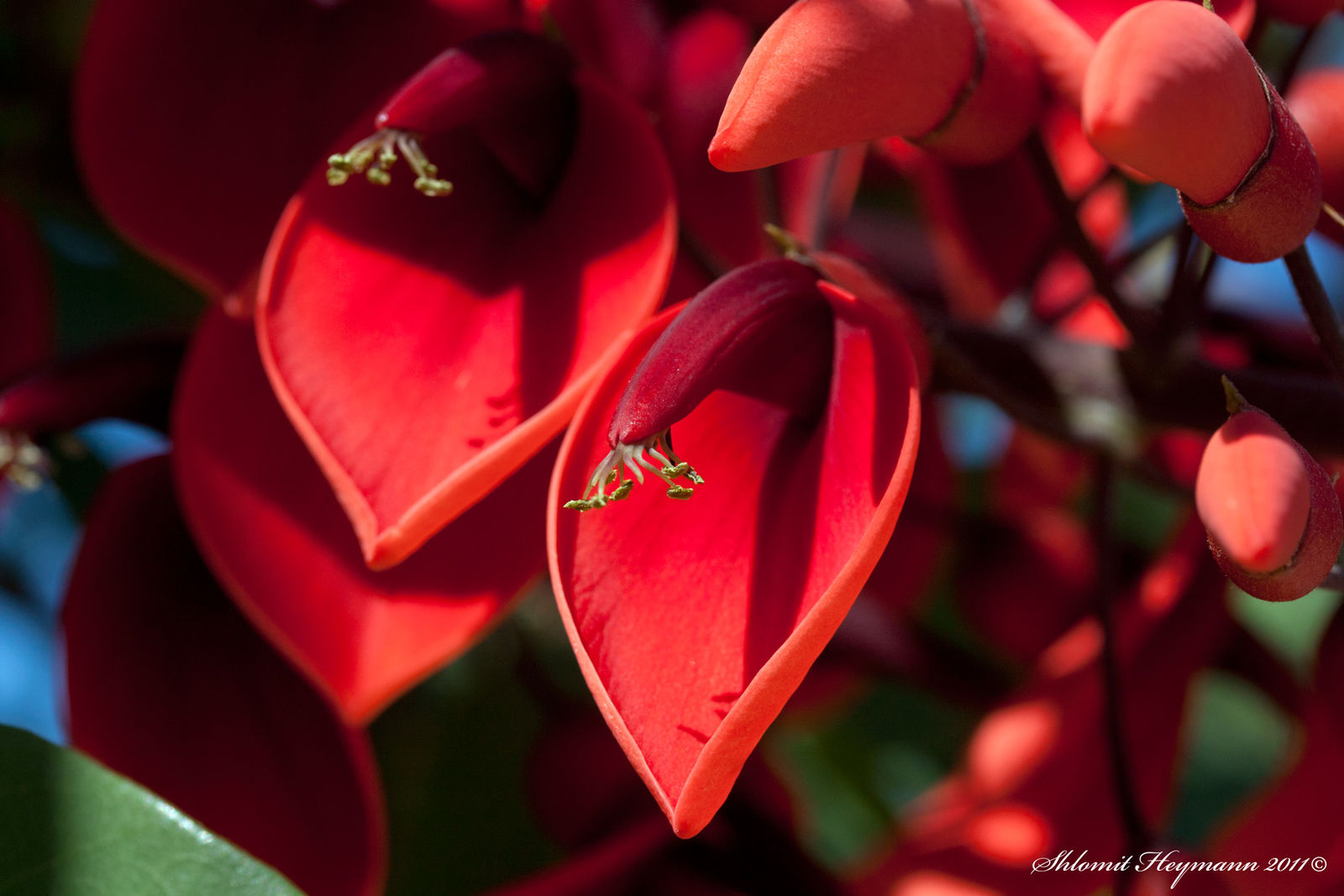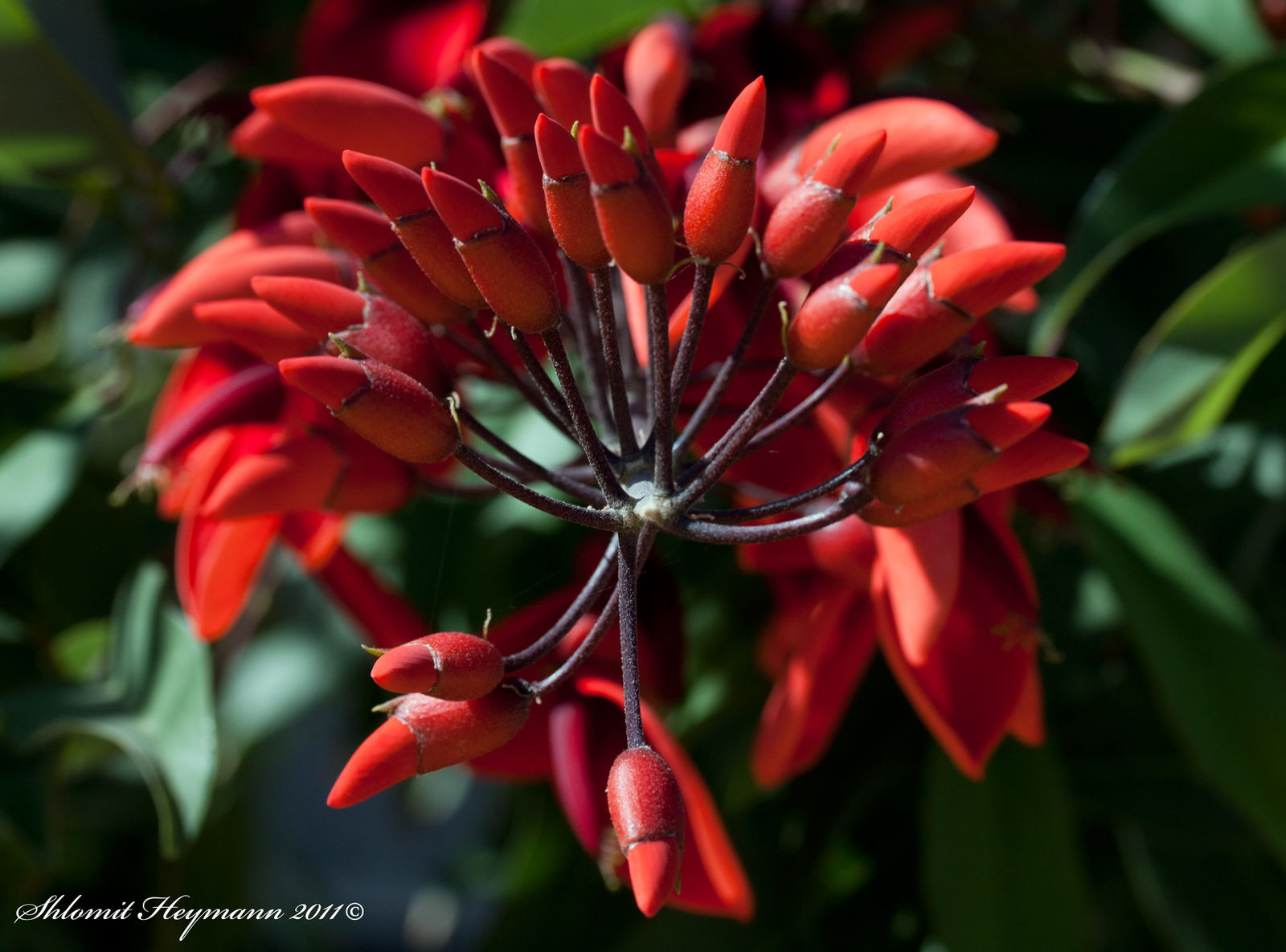Cockspur Coral Tree
erythrina crista-galli
Also known as: ["Coral Tree","Cockspur Hornbeam","Ceibo"]
Overview
A deciduous tree native to South America, known for its vibrant red flowers and spiny stems.
Benefits & Perks
["long-flowering","wildlife attractant (bees, butterflies, birds)","fragrant flowers"]
Botanical Classification
| Phylum: | Magnoliophyta |
| Class: | Magnoliopsida |
| Order: | Fabales |
| Family: | Fabaceae |
| Genus: | Erythrina |
| Botanical Name: | Erythrina crista-galli |
Plant Characteristics
Basic Information
- Category: Trees
- Suitable Location: outdoor garden in a sunny, sheltered spot
- Suitable For:
- Is Weed: No
- Allergenicity: low
Environmental Needs
- Climate: {"temperatureRange":"10–35°C"}
- Hardiness: {"zones":"9–11"}
- Misting: rarely required, only if ambient humidity is very low
- Drainage: Fast-draining to prevent root rot.
- Soil Type: Well-draining, loamy soil with added organic matter; tolerates poor soils but thrives with good drainage.
Maintenance Level
- Maintenance Level: moderate
- Toughness Level: moderate
- Pruning Frequency: Annually after flowering; light pruning can be done as needed.
- Pruning Intensity: Moderate; remove up to one-third of old growth if needed.
Care Details
Ideal Sunlight Coverage:
Full sun (6–8 hours/day); tolerates partial shade but blooms best in direct sunlight.
Sunlight Tolerance Tips:
Acclimate gradually if moving from shade to sun; protect from intense midday sun in hot climates; ensure good air circulation to prevent fungal issues.
Care Requirements
Care Difficulty
moderatemoderate
Sunlight
full sun
Rotate plant for even growth; use shade cloth in extreme heat; avoid direct sun on leaves during peak hours.
Watering
every 7–10 days during active growth, reduce in winter
Water thoroughly but allow soil to dry between waterings; avoid overwatering, especially in winter.
Soil
well-drained, loamy soil with moderate organic content
pH: Slightly acidic to neutral (pH 6.0–7.0).
Avoid heavy clay soils; amend with organic matter; ensure pots have drainage holes.
Temperature
Hardy in USDA zones 9–11; prefers 60–85°F (15–29°C); can tolerate brief frosts but thrives in warm conditions.
Protect from frost; water deeply in heat; adjust care based on seasonal changes.
Fertilizing
every 4–6 weeks during spring and summer
Fertilize after pruning; water before and after applying; avoid contact with roots.
Propagation
Methods
Stem cuttings or seed; cuttings root more reliably.
Step-by-Step Propagation Guide
- Take 4–6 inch cuttings.
- Remove lower leaves.
- Dip in rooting hormone.
- Plant in medium.
- Maintain humidity.
Best Time: Spring or early summer when the plant is actively growing.
Environment
Warm (70–80°F), high humidity (70–80%), and bright indirect light.
Medium
Well-draining mix of perlite and peat moss or cactus mix.
Hormone
Rooting hormone recommended for faster and more reliable rooting.
Timeline
Cuttings may root in 4–8 weeks; seed germination can take 1–3 months.
Tools Needed
Pruning shears, rooting hormone, small pots, misting spray bottle.
Quick Tips
Use healthy, non-flowering stems; maintain consistent moisture; provide bottom heat if possible.
Pruning & Repotting
Pruning Guide
Method
Selective thinning and heading back to maintain structure and promote air circulation.
Pruning Plan
Prune to shape, encourage flowering, and remove dead or diseased wood; best done after flowering.
Tools
Pruning shears, loppers, gloves, disinfectant.
Checklist
Disinfect tools; prune dead/diseased wood first; make clean cuts just above buds or branches.
Repotting Guide
Best Season
Early spring before new growth begins.
Pot Size
Move to a pot 1–2 inches larger in diameter; avoid overpotting.
Method
Remove plant gently; trim roots if crowded; use fresh, well-draining soil; ensure pot has drainage holes.
Suggestions
Repot every 2–3 years or when roots fill the pot; essential for container-grown plants.
Checklist
Check root health; use fresh soil; ensure proper drainage; water lightly after repotting.
Advanced Care Tips
Watering Mastery
Watering Checklist
Check soil moisture; water deeply; ensure drainage; adjust for season.
How to Apply Water Properly
Water at the base of the plant, ensuring moisture reaches the root zone; water early in the day to minimize evaporation and fungal growth.
Watering Schedule Tips
Water deeply once the top inch of soil is dry; reduce frequency in winter to prevent root rot.
Soil Improvement
Add perlite or sand for drainage; incorporate compost for fertility; ensure good aeration.
Temperature Stress Management
Signs of Temperature Issues
Leaf drop, stunted growth, or browning leaf edges in extreme heat or cold.
Cold Stress
Leaves may wilt or drop; growth slows; young plants are more susceptible to frost damage.
Solution: Mulch heavily around the base; protect with frost cloth in cold snaps; avoid watering before freezing temperatures.
Hot Stress
Wilting, leaf scorch, or reduced flowering; may drop leaves to conserve water.
Solution: Provide afternoon shade; increase watering frequency; use mulch to retain soil moisture.
Fertilizing Guide
Fertilizing Checklist
Check soil pH; apply at recommended rates; water thoroughly after fertilizing.
Fertilizing Method
Use balanced, slow-release fertilizer in spring; avoid high-nitrogen formulas; reduce or stop fertilizing in winter.
Common Problems & Solutions
Toxicity Warning
Cats
ToxicCats are highly sensitive to the toxic alkaloids present in Erythrina crista-galli. Ingestion can result in severe neurological and gastrointestinal distress, with potential for fatal outcomes due to their smaller size and metabolic differences.
⚠️ Symptoms:
🌿 Toxic Parts:
⚡ Toxic If:
if eaten
Dogs
ToxicThe toxic alkaloids in Erythrina crista-galli can cause severe poisoning in dogs, affecting their nervous and cardiovascular systems. Ingestion can lead to serious health complications and potentially be fatal if not treated promptly.
⚠️ Symptoms:
🌿 Toxic Parts:
⚡ Toxic If:
if eaten
Humans
ToxicErythrina crista-galli contains toxic alkaloids, primarily erysopine and erythrinine, which can cause significant physiological disturbances upon ingestion. These compounds interfere with neuromuscular transmission and can lead to severe neurological and cardiovascular effects.
⚠️ Symptoms:
🌿 Toxic Parts:
⚡ Toxic If:
if eaten
Frequently Asked Questions
Q: Is Erythrina crista-galli toxic to pets?
A: Yes, it is toxic to dogs and cats.
Q: Does this plant require full sun?
A: Yes, it thrives in full sun conditions.
Q: Does the Cockspur Coral Tree attract wildlife?
A: Yes, it attracts bees, butterflies, and birds.
Quick Reference
| Family: | Fabaceae |
| Care: | moderate |
| Light: | full sun |
| Water: | every 7–10 days during activ |
Get Expert Care Tips
Download the Plantious app for personalized care reminders and plant identification!
Google Play App Store








